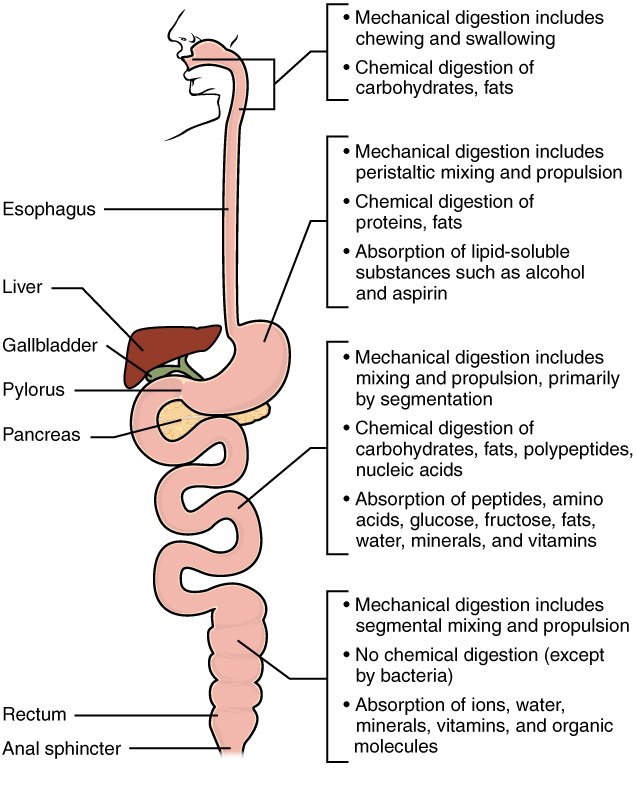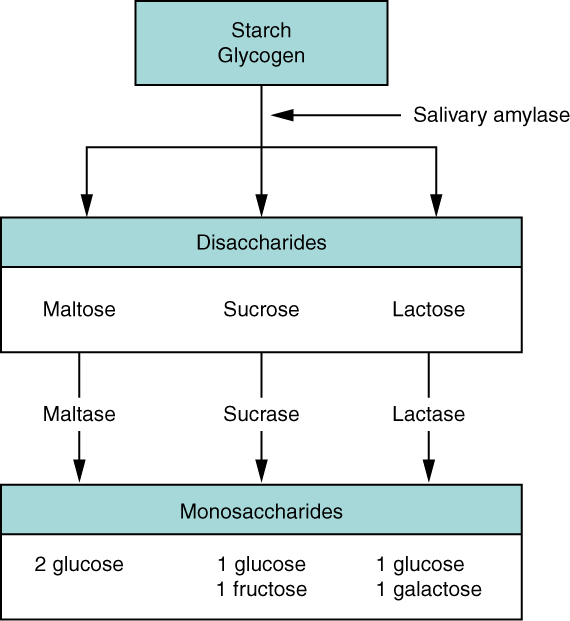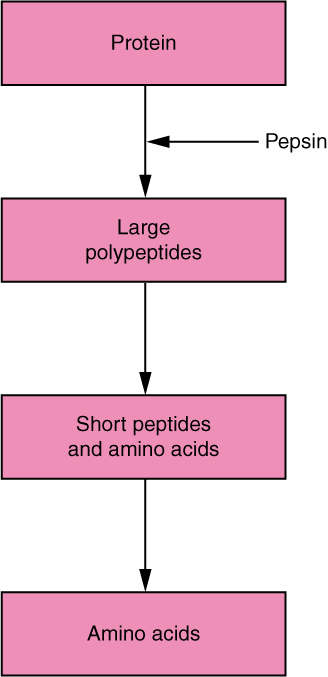| << Chapter < Page | Chapter >> Page > |
As you have learned, the process of mechanical digestion is relatively simple. It involves the physical breakdown of food but does not alter its chemical makeup. Chemical digestion , on the other hand, is a complex process that reduces food into its chemical building blocks, which are then absorbed to nourish the cells of the body ( [link] ). In this section, you will look more closely at the processes of chemical digestion and absorption.

Large food molecules (for example, proteins, lipids, nucleic acids, and starches) must be broken down into subunits that are small enough to be absorbed by the lining of the alimentary canal. This is accomplished by enzymes.
The average American diet is about 50 percent carbohydrates, which may be classified according to the number of monomers (subunits) they contain. You should take notes on figure 2 below .
The chemical digestion of starches begins in the mouth and has been reviewed in previous modules. In the small intestine, pancreatic amylase does the ‘heavy lifting’ for starch and carbohydrate digestion ( [link] ). Amylases break down starches into simple sugars. Three brush border enzymes break up the sugars sucrose, lactose, and maltose into monosaccharides.

Proteins are polymers composed of amino acids linked by peptide bonds to form long chains. Digestion reduces them to their constituent amino acids. You usually consume about 15 to 20 percent of your total calorie intake as protein.
The digestion of protein starts in the stomach, where HCl and pepsin break proteins into smaller subunits, which then travel to the small intestine ( [link] ). Chemical digestion in the small intestine is continued by pancreatic enzymes, including chymotrypsin and trypsin , each of which act on specific bonds in amino acid sequences. At the same time, the cells of the brush border secrete enzymes. This results in molecules small enough to enter the bloodstream ( [link] ). Take notes on figure 4 .
.jpg)

A healthy diet limits lipid intake to 35 percent of total calorie intake. The most common dietary lipids are triglycerides, which are made up of a glycerol molecule bound to three fatty acid chains. Small amounts of dietary cholesterol and phospholipids are also consumed.
The lipase primarily responsible for lipid digestion is pancreatic lipase . However, because the pancreas is the only consequential source of lipase, virtually all lipid digestion occurs in the small intestine. Pancreatic lipase breaks down each triglyceride into subunits called free fatty acids and monoglycerides .

Notification Switch
Would you like to follow the 'Digestive system' conversation and receive update notifications?